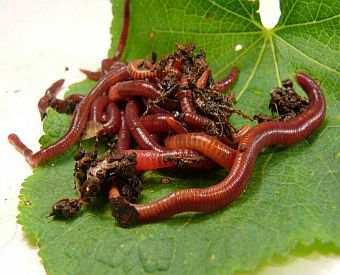Getting My Red Wiggler Express To Work
Getting My Red Wiggler Express To Work
Blog Article
The Best Guide To Red Wiggler Express
Table of ContentsRed Wiggler Express Fundamentals ExplainedThe Buzz on Red Wiggler ExpressRumored Buzz on Red Wiggler ExpressRed Wiggler Express Can Be Fun For EveryoneExcitement About Red Wiggler Express
It's secure to claim this things would certainly have been terrific to include as a to vermicomposting systems! And the growing Red Worm populace? It just never ever took place. Even in the lot that was set up directly in front of backyard composters with existing Red Worm colonies. Yet these nutritionally-boosted wood chip environments are definitely loaded with Lumbricus sp.
Lots of varieties, including Red Wigglers, European Nightcrawlers, and Lumbricus species were brought over from the European continent. Yet here's the thingNative or not - and as gifted as they go to being able to endure in a wide-range of settings and conditions -. To put it simply, they are far a lot more most likely to hang out in any active composting systems you have established up, than they are to stroll off and begin messing up the atmosphere.
Roots need oxygen for respiration and depend on smooth air movement within the dirt to grow. Nonetheless, when it rains, soil can come to be saturated with water, decreasing the oxygen readily available and impeding nutrition absorption - Worm Farms United States. To maintain an optimum equilibrium, the dirt has to permit water to drain appropriately, leaving adequate room for air to sustain origin wellness
The Greatest Guide To Red Wiggler Express

When it comes to worms for composting, what comes to mind? If you were an earthworm dog breeder, supplier, or plain gardener, then you would certainly know that red wiggler worms are the excellent worms for vermicomposting. For more information about these earth marvels, gone through some of the red worm truths listed below.
(https://ad-links.org/Red-Wiggler-Express_319069.html)If they stretch their bodies, you'll be able to see the stripes on their skin. When elevating worms such as red wiggler worms, you need to be able to know exactly how to profit them. When you're able to maintain and look after their environment well, and also feed them the right kinds of organic wastes, then they'll be able to produce nutrient-packed and quality-rich worm castings for you (likewise recognized as worm poop or compost).
Red Wiggler Express Fundamentals Explained
So, what do worms consume? Well, these red wriggler worms can be fed with kitchen scraps and garden wastes. Any rotting natural things will certainly do like veggie and fruit peels, crushed egg shells, made use of tea bags, coffee premises, grass trimmings, completely dry fallen leaves, and others. However make certain not to feed them foods that are oily, citrusy, or has meat or dairy in them. Red Wigglers For Sale.

This behavior makes them well-suited forever in worm containers, compost heap, and various other constrained rooms where organic waste is plentiful. Creating an optimum setting for red wigglers calls for a thoughtful strategy. Consider the following crucial components to look after red wigglers at home and ensure their well-being: Use a bed linens of shredded paper or cardboard.

Include a handful of completely dry, shredded paper if the bin becomes as well damp. They do! Red wiggler worms recreate by laying small, lemon-shaped eggs in protective cocoons. These cocoons are normally transferred in the bed linen and hatch into infant worms within a couple of weeks. The quick recreation cycle of red wigglers is among the reasons they are preferred for vermicomposting.
Our Red Wiggler Express Diaries
Their flexibility and resilience have made them a prominent choice for vermicomposting in various regions around the globe. Yes! They can survive from a series of 32F to 90F. They are very adaptable critters. Consider safety measures for really severe temperature levels such as: Protecting the worm container with layers of straw or leaves.

When caring for your red wigglers it is essential to keep in mind to: 1) K.I.S.S (Maintain it Simple) and 2) whatever in moderation. These policies relate to feeding your compost worms, sprinkling your worm containers, and just about every little thing else included in taking care of them. Just remember - you can always include more food later on (however it's difficult to get rid of feed once it's been included in a bin!).
Because I fed the red wigglers and compost worms excessive, they weren't able to maintain and over time the older food went uneaten and created anaerobic conditions that killed the worms. The bright side is that there are very basic actions you can take to guarantee this does not happen! Below're the 6 principles for how usually and how much to feed your worms: Policy # 1: Small amounts! You can always add more food later.
The 30-Second Trick For Red Wiggler Express
Leftover food will lead to anaerobic problems that will kill your online worms. It is okay to sprinkle a little of their original bed linen (which must already remain in the bin) over the food, however the food must never be hidden and should be visible to your eye. Regulation # 5: See rule # 1! Guideline # 6: After the initial feeding, feed the worms 1/3 to 1/2 of their weight.
Report this page